
This week for Flora and Fauna Friday we have nature’s shag carpet, Haircap Mosses (Polytrichum spp.).
We have two fairly abundant species of Haircap Moss here on the Sea Islands, Common Haircap Moss (Polytrichum commune) and Juniper Haircap Moss (Polytrichum juniperinum). Common Haircap Moss is found nationwide and across South Carolina, but is most common in the piedmont and mountains. Juniper Haircap Moss is found throughout the United States, and is our most prolific Haircap in the Lowcountry. Yet, it is still a scarce member of our Sea Island ecology. It appears most often on the shaded margins of pine savannas, sand barrens, and dry sand ridge forests. It prefers to grow on exposed, weathered sands and is tolerant of fire and other habitat disturbance.
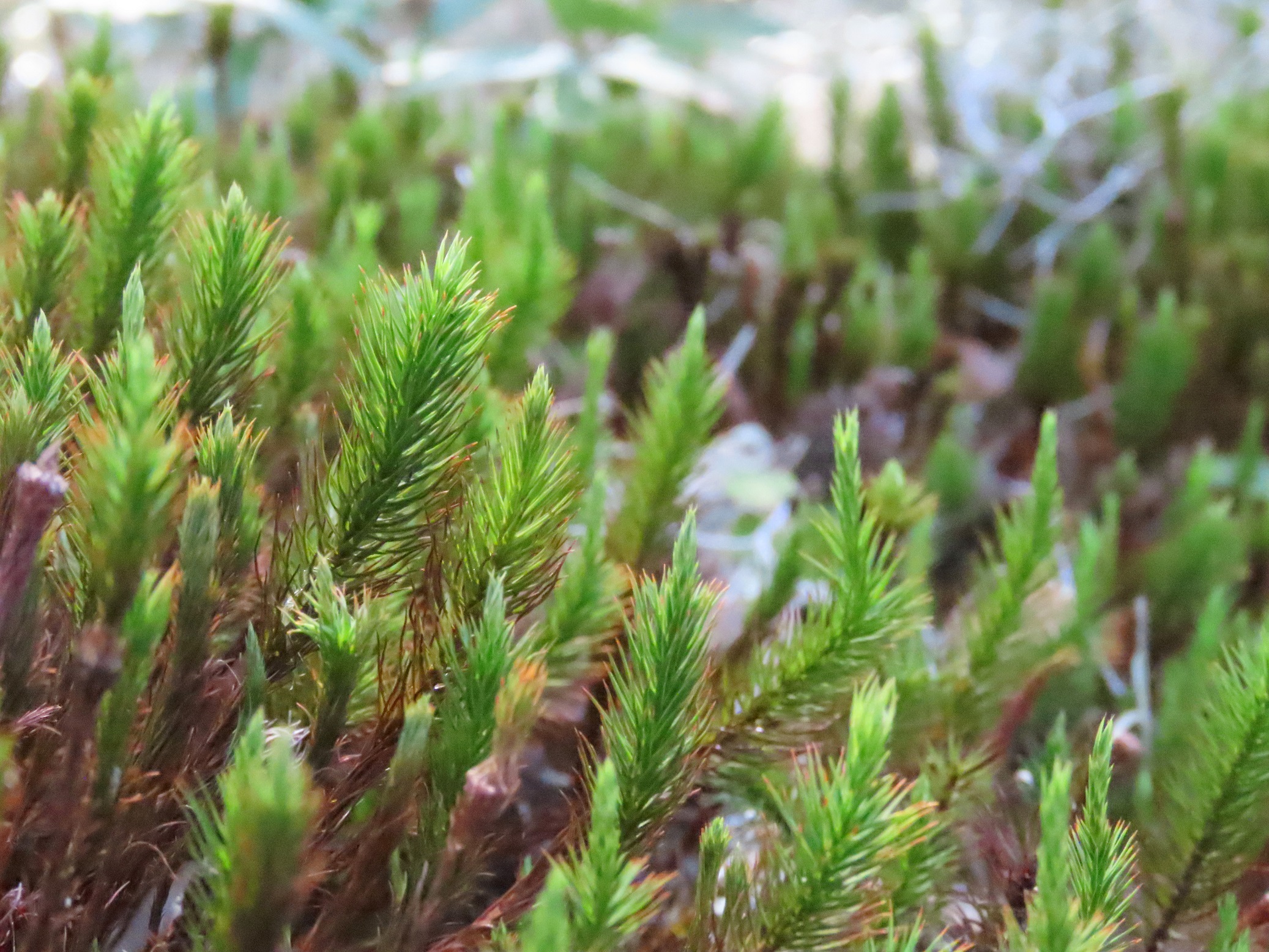
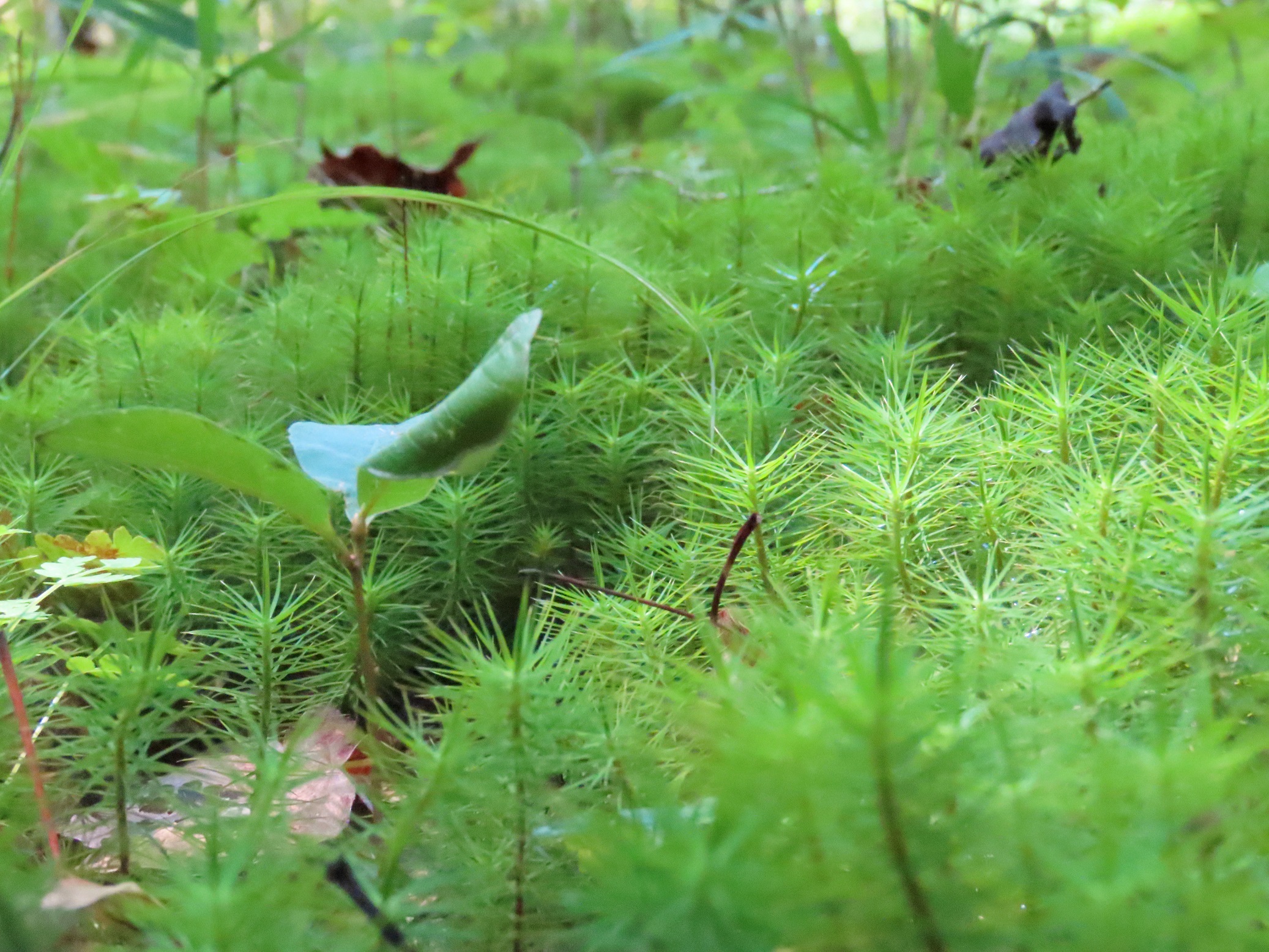
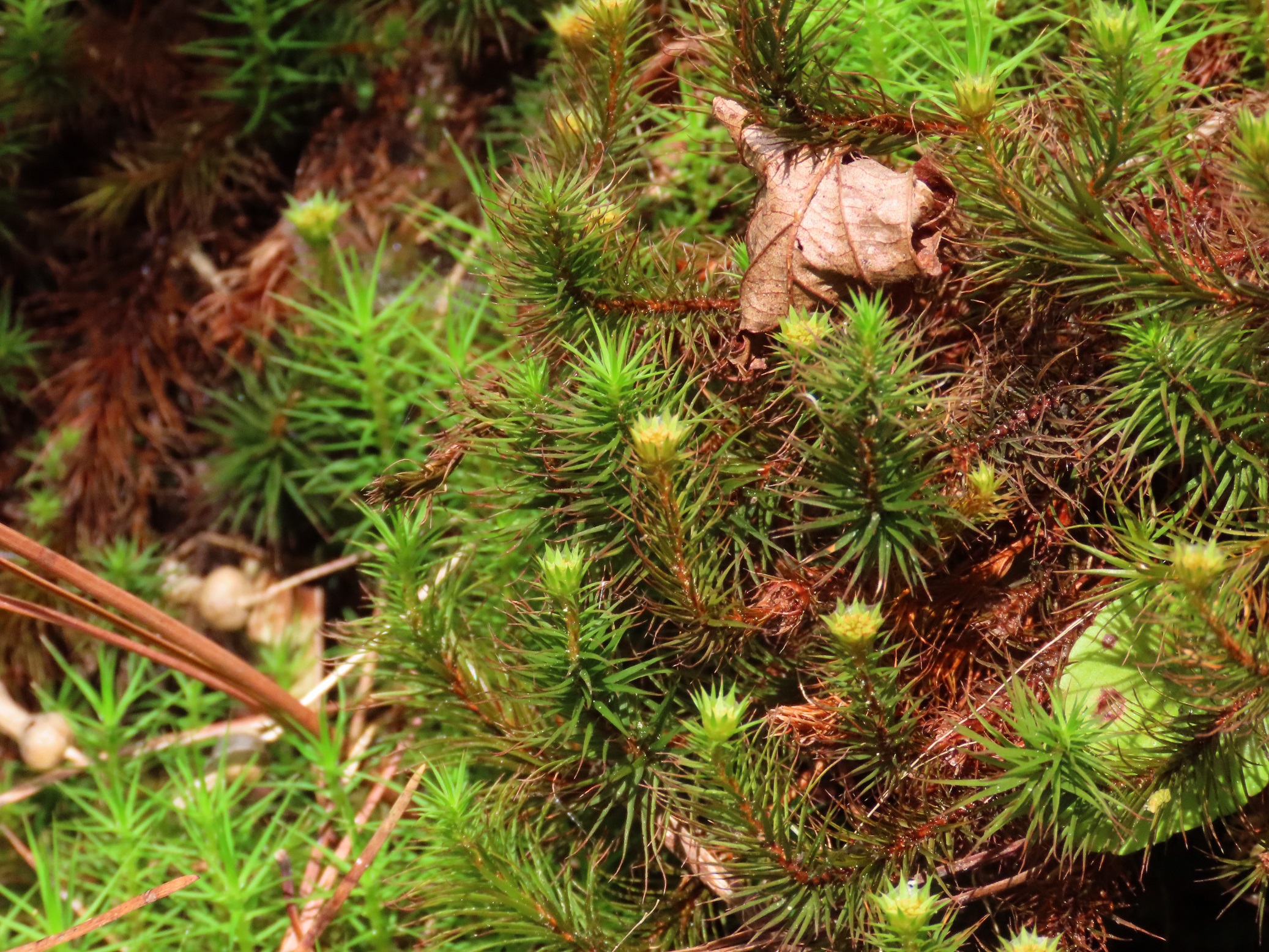
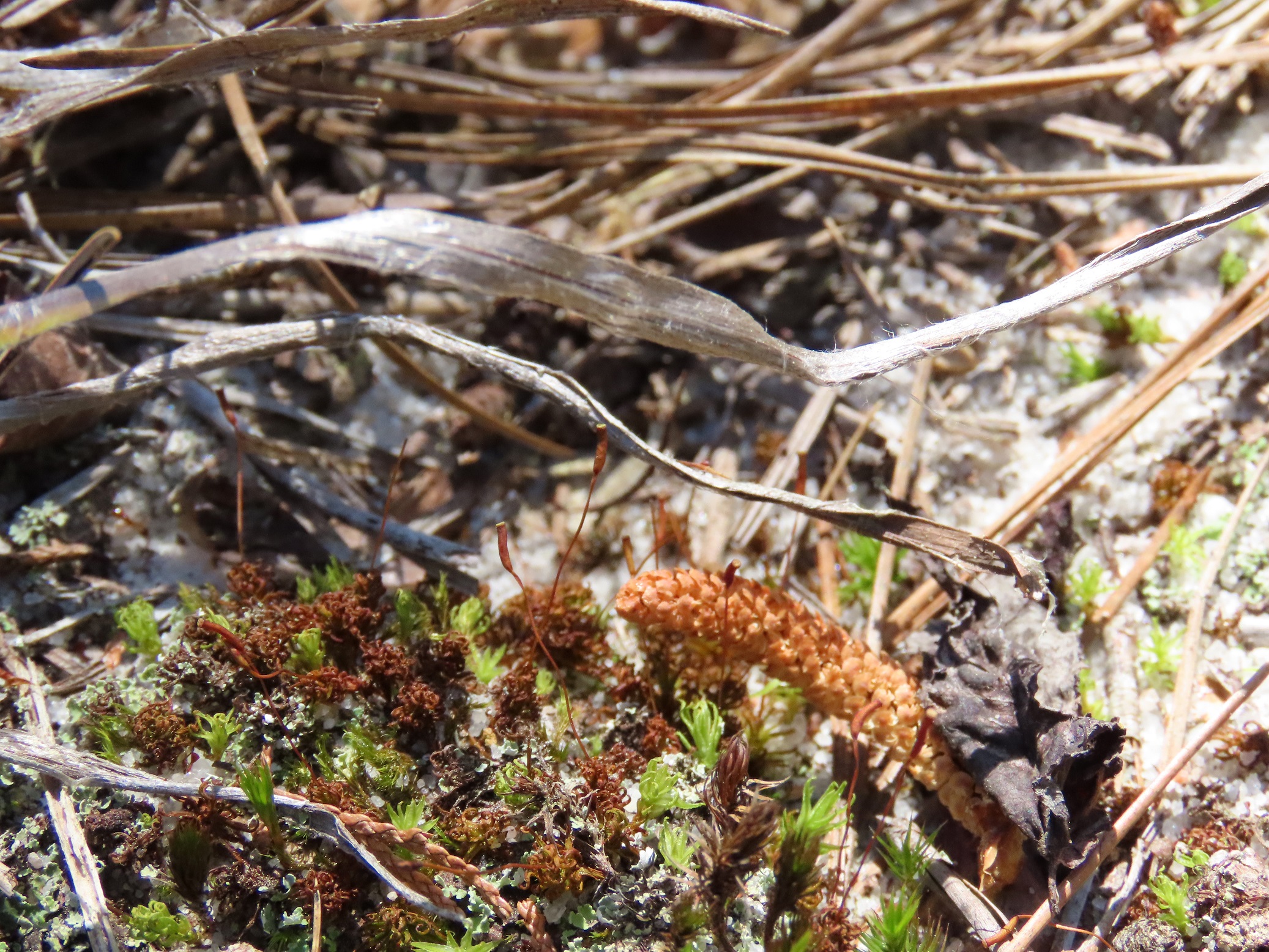
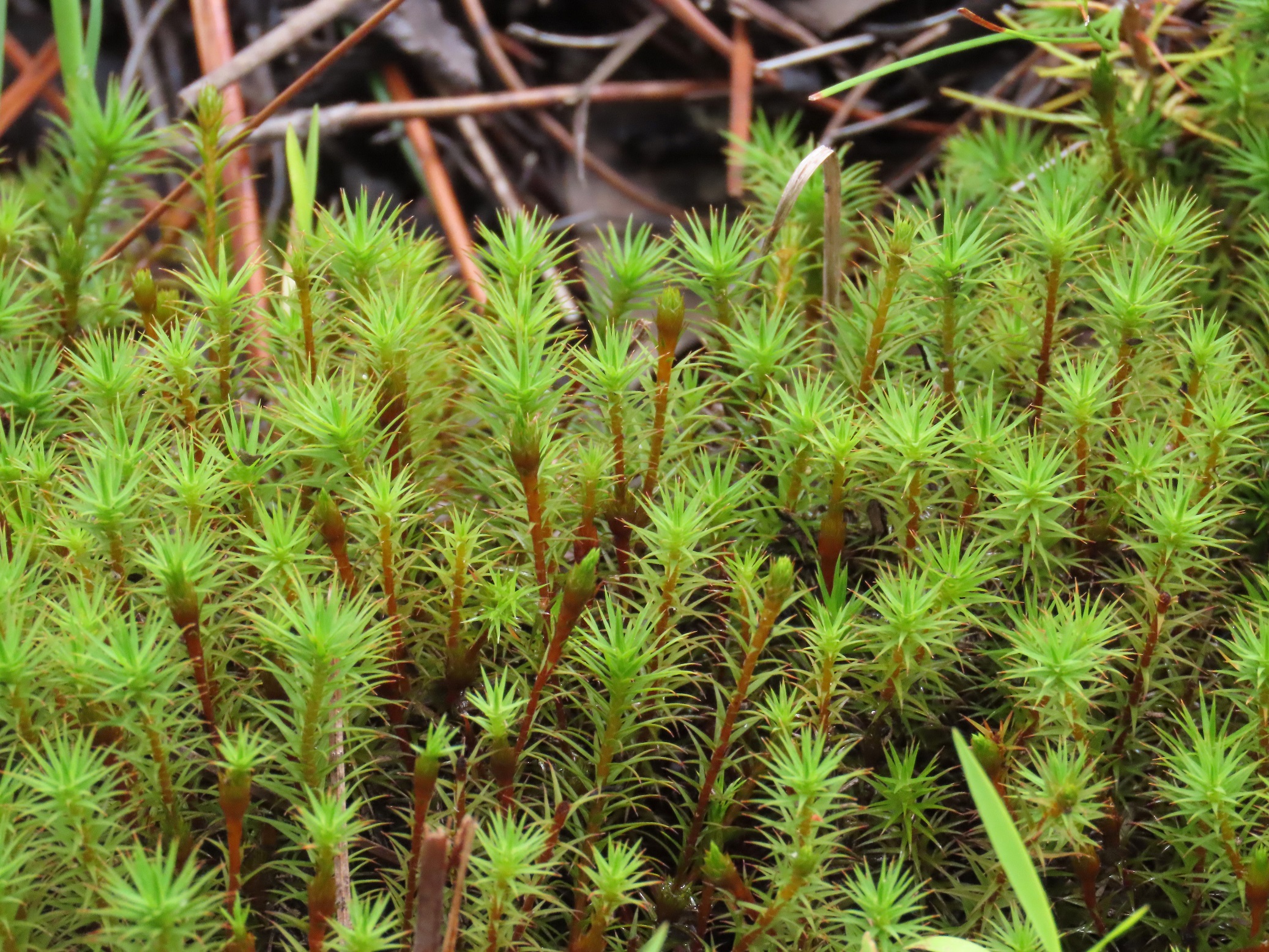
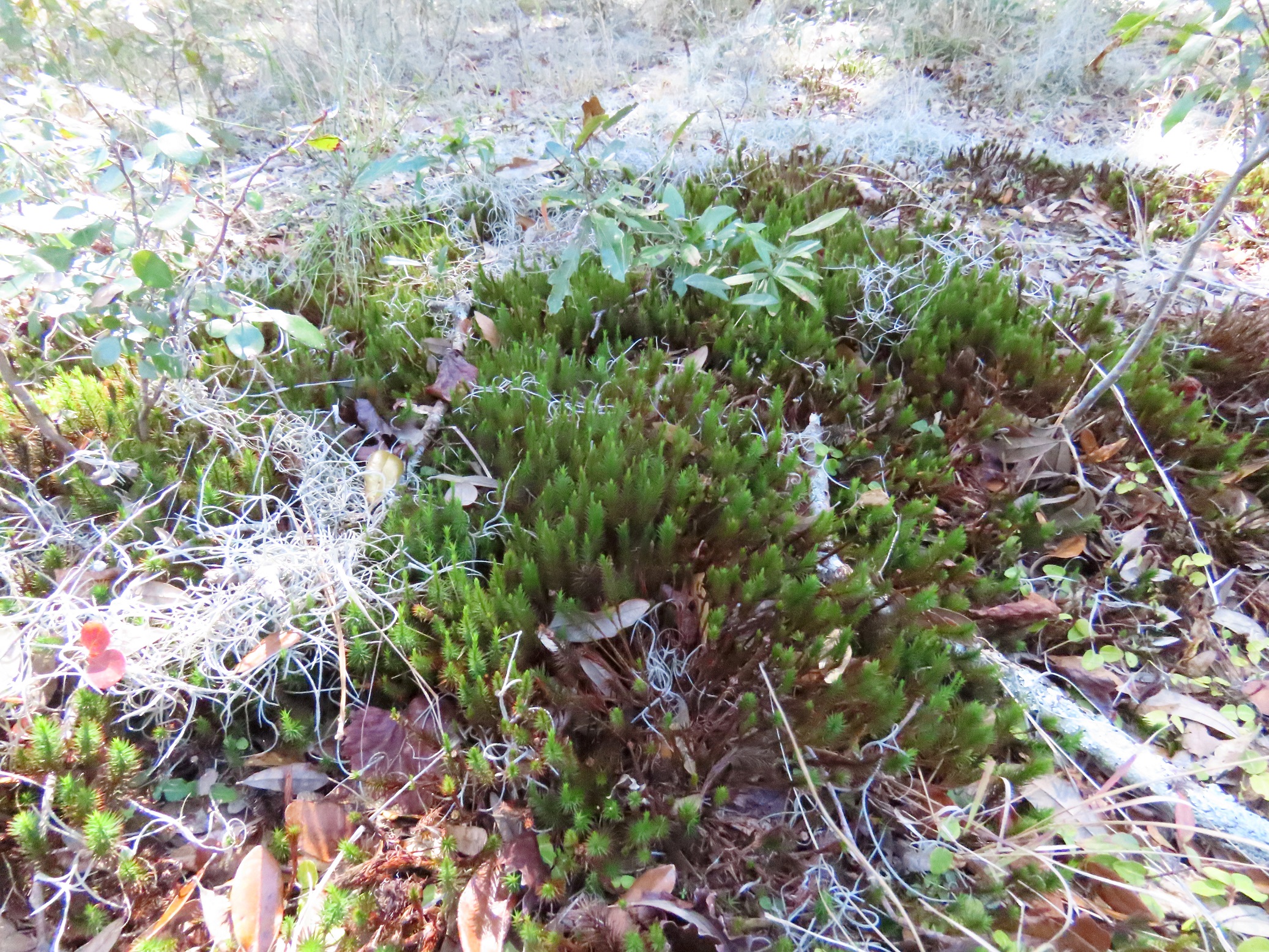
These two species look incredibly similar. One of the easier ways to tell them apart is through their leaves under droughty conditions. Common Haircap’s leaves have a distinct downward curve to them, which can exaggerate as they dry. Juniper Haircap, conveniently and conversely, has straight leaves that fold upward tightly against the stem as they dry. If you look really, really close at the leaf margins, Common Haircap is serrate all the way towards the tip. But you’ll likely need a hand lens to see this. Both species grow in mats on the soil’s surface, like a lush shag carpet. Each stem is usually one to three inches in height and ringed in narrow needle-like leaves, giving it the shape of a bottle brush.
In order to go any further, we’ll need to take a detour for a crash course on Moss biology. Mosses are plants, but very primitive plants. They lack the means to produce the polymer lignin. Lignin gives plant cell walls their rigidity. It’s what makes wood “woody”. Like steel reinforced concrete, lignin is the rigid cement and cellulose the flexible steel scaffold. It’s also critical to the proper structural formation of vasculature and roots in plants. Thus, lacking lignin, Mosses lack roots and the internal vasculature to transport water and nutrients around their body. Instead, they’re basically a sponge, passively wicking water from the soil’s surface and through their skin throughout the rest of their body. They must also sponge mineral nutrition from the environment, absorbing it not only from the soil but through windblown dust and ash they trap between their leaves, and from the acids and other trace nutrients dissolved in rainwater.
Now it gets weird and I have no choice but to start using the big science words. Mosses don’t reproduce with flowers nor with seeds. They pre-date both. Instead, they produce capsules and spores. But these are produced by a second plant, which grows on top of the first plant. (I told you it was getting weird.) The Haircap Moss we see, that we all know and love, is a gametophyte. It’s a haploid. It only has one set of chromosomes. It has half the genetic material of the organism, just like sperm and eggs in animals. In spore reproducing plants, including Mosses, Clubmoss, Horsetails, and Ferns, the gametophyte is the main life stage that anchors to the soil, photosynthesizes, and lives a long healthy life. The opposite is the case in flowering plants and gymnosperms (E.G. pines, cedars, cypresses).
The gametophyte of Haircap Moss, when mature, will produce a dense spiny disk at the tip of the stem. Haircap Moss is dioecious, meaning it has male and female plants. Male plants grow an Antheridium, female plants an Archegonium. When rainwater lands into the bowl-shaped male Antheridium, it splashes sperm away with it. If those droplets of water land on a nearby female Archegonium, it’ll be fertilized. From within this Archegonium cradle, a diploid sporophyte, with a full set of chromosomes, will grow directly out of the tip of the gametophyte’s stem. In Haircap Moss, this sporophyte derives all its water and nutrition by leeching from its parent gametophyte. When the sporophytes of Haircap Moss begin to emerge, they’re spear-shaped and protected by a fibrous sheath that whitens and frays away with age. The orange-brown sporophytes of Haircap Moss are shaped like a golf club when mature, with a skinny stalk holding aloft a rounded oblong lump of a capsule at a roughly right angle. This capsule will produce gamete spores and, once the sporophyte dies, the capsule dries and will pop open, scattering spores into the wind.